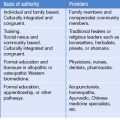CHAPTER 2 Compassion
The twelve-year-old girl’s lips were blue with cold as she staggered through the thigh-deep snow. At 19 000 feet in altitude, she was buffeted by the bitter cold wind as she endured the second day of a winter blizzard. The group she was with had no warm jackets and only canvas sneakers on their feet. They couldn’t turn around for two reasons: it was now harder to go back up over the pass they had just crossed than to carry on down, and if they did re-cross the pass, the army would be waiting for them.
A young man put the girl on his back. He carried her that day, and huddled with her at night, for they had no tents or sleeping bags. The next day, as he staggered through the snow with the girl on his back, he realized that she had died. He had no choice but to leave her in the snow, and try to save his own life.
The man had been so focused on carrying the young girl that he had not noticed that his feet were now frozen. He could no longer walk. His girlfriend put him on her back, and forced her way through the snow. Another day and night brought them out of the snow into a new country.
The police stopped them. These border officials were not interested in sending them back or in helping them. Their only motivation was to steal all they could from the helpless group. They took whatever valuables they could find, even extra clothing, and let them go. The ragged group carried on down a valley into the warmth of the lower altitudes.
They reached a road, and managed to get a ride for 5 hours to Kathmandu. There they found the Tibetan refugee center and a nurse. She looked at the hands and feet of the newly arrived refugees and called me to see them.
The twenty-one-year-old man who had courageously struggled across the highest part of the pass with the dying girl on his back had severe frostbite. His feet had already turned completely black above his ankles and begun to shrivel. Both of his legs would need to be amputated below the knees. The others had varying degrees of frostbite: some would lose their toes, others would lose half their foot. Several people would lose parts of their fingers. They had endured this tortuous journey to achieve freedom from an oppressive occupier of their country.
If this brave group had been Americans, they would have immediately gone onto television news and talk shows, signed book contracts, and sold the film rights to their story. The fact that no one outside of a handful of people in Nepal or India was at all interested in their struggle says a lot about our view of refugees and immigrants. For a nation that prides itself on having been built by immigrants, we seem to have lost our interest in those who are still being forced to move from their native lands.
‘One little girl trapped at the bottom of a Texas well had the entire nation holding its breath,’ said Ted Koppel on Nightline in 1991. ‘But millions starving in Africa, as many as 25 000 drowned in Bangladesh, over 1000 killed by cholera in Peru barely get our attention. Why?’1
Most readers of this textbook will have grappled with these questions already. The desire to care specifically for an immigrant or refugee population suggests that the reader already has the ability to imagine oneself in their situation, and to want to help. We could call this desire to help compassion.
Compassion is defined in the dictionary as ‘to suffer’ (passio) ‘with’ (com). This definition is closer to sympathy and empathy than it is to the Buddhist definition of compassion which means, ‘the desire to ease suffering in others.’1 (The Tibetan word for compassion is ‘nyingje,’ which literally translates as ‘from the heart.’) This definition resonates with a much more active feeling of wanting to help, and is actually closer to what people naturally feel when they see someone who is suffering.
All of us have compassion in relative degrees at different times. However, our ability to maintain the desire to ease suffering is often limited. It is easiest for us to care about our own families and close friends and relatives. We may also find it easier to care about people with whom we share some common heritage or beliefs. Beyond that, it becomes more difficult to demonstrate strong compassion towards those we don’t know. And most of us find it almost impossible to be kind and compassionate towards those who are making it difficult for us, or have harmed us in the past. How many of us were able to feel compassion towards the September 11, 2001 hijackers along with their victims?
In addition, we may feel that we just don’t have enough energy to care about what happens to people in all corners of the world. The range of suffering experienced in other parts of the world often goes so far beyond our imagination that it appears to be happening on another planet. There are very few Americans who have ever spent even a passing moment trying to imagine what it would be like to be forced from their homes by a marauding militia, fleeing on foot for days or weeks, and winding up across the Mexican border with a handful of possessions, no money, not speaking the local language, and wondering what was going to happen to them that night, much less the rest of their lives.
Those in the medical profession who take care of immigrants often do so by choice, probably because they have some sense of the suffering that many have been through, and want to try to help. An immigrant population may be needier than other patient populations. They may have language obstacles, and a lack of cultural understanding. They may have logistical, emotional, or psychological problems that make it difficult to care for them. After some time, our ability to maintain compassion may start to erode.
That situation speaks to the heart of the problem. How does one increase or stabilize compassion when one already feels that one is trying as hard as one can? Is compassion fixed like a character trait, or can it be modified through training? If our compassion can decrease – something we all unfortunately seem to experience at times – can it be increased?
Our current concept of compassion is that it is like a rechargeable battery. It can take only a finite amount of charge. Once charged, it can only run down, so we tend to use it sparingly, applying it to specific situations, and withholding it in others. When it is finally depleted, we need to get it recharged, which usually means going on a holiday. If it is a successful holiday, we will have a charged battery for a while. However, like a rechargeable battery, our ability to hold a full charge may decrease over time. Eventually, we may even declare ourselves the victims of ‘professional burnout’ and leave our current job.
It may be useful to look at compassion in a different way. What if there was a way to train in compassion? What if our capacity for compassion could be increased and the effort required to maintain that compassion could be decreased?
From the medical point of view, we can agree that there is a need for more compassion in our field. The focus of modern medicine began to shift in the 1920s as diseases started to replace the patient as the focus of care. We began to treat ‘diabetes’ rather than a person with high blood sugar. The advantages of a scientific approach to medicine seem obvious. However, this shift in emphasis has permanently affected the doctor–patient relationship, as pointed out in 1927 by Francis Peabody:
‘He discerned a great irony: at the very time that medicine was improving, a decline in the physician–patient relationship was taking place. Physicians, he argued, were in danger of forsaking the patient for science.’2
It’s not as if modern medicine is without compassion – after all, doctors and nurses work long hours, often work night shifts, or remain on call day and night. Fulfilling this schedule means making a lot of personal sacrifices to care for patients. This commitment is based on compassion. Compassion – when looked at this way – is assumed to be built into the practice of medicine: ‘Of course I care for you, I’m caring for you aren’t I?’ This type of compassion can be called ‘de facto compassion,’ and it ends up feeling dissatisfying to both the patients (who aren’t sure that the doctor really knows or cares about them), and the doctor (who ends up feeling unappreciated and can’t understand why).
Ordinarily, when we have a problem to solve in medicine, we seek advice from experts who have studied the problem. The only experts that the author has been able to find who can describe compassion in detail and outline step-by-step ways of increasing one’s own compassion appear to be the teachers of the Tibetan Buddhist tradition. The Dalai Lama is known for his profound compassion and wisdom, and there are many other teachers in the Tibetan tradition who embody these same qualities. Each of them has achieved a vast and stable form of compassion that one can appreciate if one gets to know them personally. These teachers spend their lives trying to inspire and teach others that compassion, as an inherent part of our true nature, can be expanded to an extraordinary degree through training.3 (The Tibetan Buddhist concept of compassion stands in contrast to a less certain view of compassion in the West, as characterized by Anne Harrington: ‘We understand ourselves to be emergent products of indifferent physiochemical process: and – though we have always admitted our capacity to experience and practice compassion – there is little in the stories we tell of our origins and emergence that is likely to incline us to see compassion as fundamental to our nature.’)
If other experts on compassion emerge, they should be consulted as well. The idea is not to promote Buddhism, but to explore the qualities of compassion, and how these qualities can be expanded through training, and applied to the practice of Western medicine.
Medical schools have recognized a need to encourage medical students to see their patients as more than just a disease process. They encourage empathy and teach interview techniques and appropriate ways of responding in difficult situations. Students, in general, appear to benefit from these educational efforts, but as they reach the clinical wards, the need to be efficient and get one’s work done trumps the desire to spend time getting to know and comfort one’s patients. Indeed, the problem of the rigors of clinical training eclipsing the classroom teaching on empathy has been dubbed ‘a hidden curriculum,’ within medical training.4 One doctor who studied the problem concluded that ‘for many residents, fatigue cultivates anger, resentment, and bitterness, rather than kindness, compassion, or empathy.’5
This author is unaware of any Western models that provide the ability to directly train in increasing one’s capacity and breadth of compassion. Therefore, I will outline Tibetan Buddhist concepts of training in compassion so that we can investigate for ourselves whether these insights will help us achieve the goal of being able to be compassionate towards more people more of the time. These concepts are available in much more detail in the book that I helped create entitled Medicine and Compassion: A Tibetan Lama’s Guidance for Caregivers.6 This book represents the teachings that Chokyi Nyima Rinpoche, a Tibetan lama with whom I have a close relationship, gave during two courses on medicine and compassion directed to medical professionals.
We need to first consider why it is difficult for us to maintain our compassion throughout our working day, let alone our careers. We can list three main reasons:
Only gold members can continue reading.
Log In or
Register to continue

Stay updated, free articles. Join our Telegram channel








